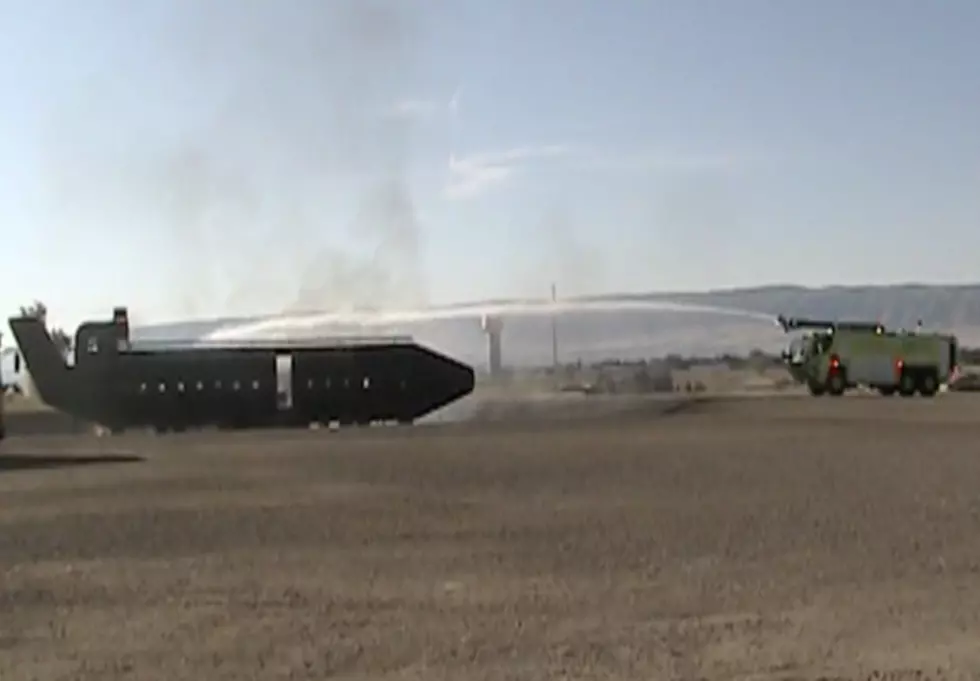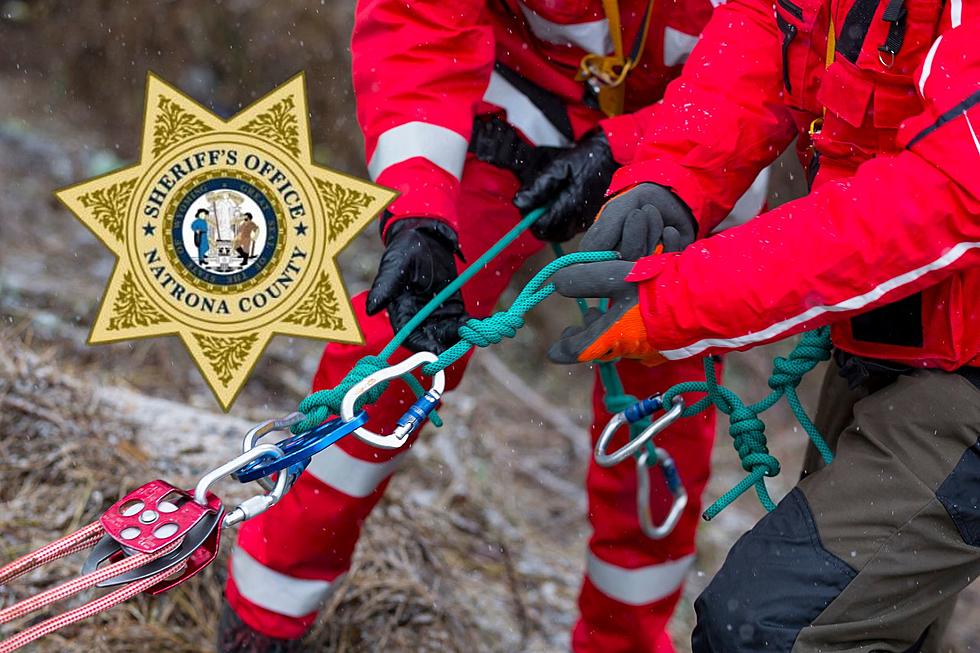
Natrona County Agencies Respond to Simulated Plane Crash at Airport
Some souls got green ribbons; they, "the walking wounded," had minimal injuries and were coherent.
Some souls got yellow ribbons; they were injured, but not severely.
Some souls got red ribbons; they had severe injuries and needed transportation for immediate treatment.
Six got black and white ribbons; they were "79," victims who died.
These 31 patients -- people of all ages -- were taken from a bus that served as a de facto airplane that had crashed during a triennial, full-scale emergency exercise at the Casper-Natrona County International Airport on Saturday.
The exercise marked the culmination of two years of discussions about how first responders would react to an airplane crash with a mass casualty event.
"This morning, area agencies conducted a full-scale disaster exercise," said Keira Grogan, spokeswoman for the Natrona County Sheriff's Office
"The simulation was an airplane crash that resulted in a mass casualty incident," Grogan said.
"This morning, we conducted it in real time as if the crash had just happened, bringing in multiple partners as far as Mills Fire Department, Evansville Fire Department, Banner Health-Wyoming Medical Center, Natrona County Emergency Management, Natrona County Sheriff's Office, victim services coordinator; we had partners from the airlines, as well as 911 dispatch here."
The first responders came on the scene as if it actually happened, not knowing what they will see, she said.
Dan Kittinger is deputy director of operations and safety at the Casper-Natrona County International Airport, and explained how the first responders treated the victims.
"The initial triage is going to be quick, 20 to 30 seconds per person," Kittinger said.
After that, the paramedics and others seemed to move at a maddening snail's pace especially with victims wearing the red ribbons.
That's deliberate, Kittinger said.
"You do not want to move the patients too quickly; we do not know the extent of their injuries," he said. "Somebody may have a broken neck that you're unaware of, and they may have back injuries, broken arms, and if you go to move them very quickly without C collars (neck braces), without the proper restraining backboards or extrication -- whatever is needed, you can actually do more injuries to them."
The medical care came after the simulated crash at the airport's disaster training facility.
The event started with igniting diesel at the tail of the mock fuselage, which is in the center of an enclosure surrounded by a berm. Kittinger said this was one of the few failures of the event, because the entire fuselage was to light up and not just at the tail.
A bus pulls up, and a smoke machine is installed in the back to create smoke that will engulf the passengers.
After the crash, word reaches the airport's fire department, which sent out two ARFF (Aircraft Rescue Fire Fighting) trucks. The large one can carry 3,000 gallons of water and shoot 1,500 to 2,000 gallons per minute, Kittenger said. "We can empty that water in 90 seconds."
"Our main priority is saving lives and to do that we need to put out the fire and create a safe exit for the passengers for any of the walking wounded," he said.
Firefighters entered the bus and help out the wounded, and carry out body parts and the dead.
The final phase will be when the Natrona County Coroner's Office arrives for the deceased, Kittinger said.
Grogan said Saturday's live drill fits with the airport's safety response programs.
"Everyone is able to best assess what went positively and, of course, things they want to tweak going forward, and that's why we are continuously training every day and also conducting these full scale exercises," she said.
Airplane crash simulation training exercise
More From My Country 95.5









